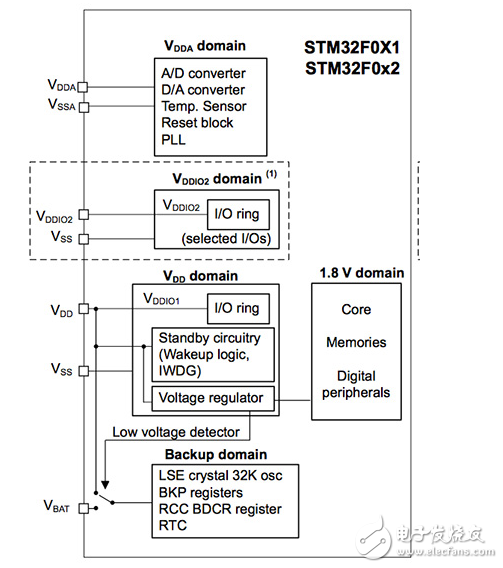
资料下载

MCU控制电池管理是成功的物联网实现的关键
MCU控制电池管理是成功的物联网实现的关键
MCUs将在物联网(IoT)的主要控制元件导向设计这些MCU可能是电池供电。电源效率将是至关重要的,以实现可接受的电池寿命,因此MCU将需要管理电池使用更精确比以往任何时候。许多微控制器具有特殊的功能,帮助管理电池功率和使用这些功能的优化可以赢得或失去在市场上的差异。
本文将快速回顾一些关键功能,需要实现高效的基于电池的MCU设计,并举例说明,使用示例设备,这些功能如何提高效率和电池寿命。软件工具,帮助估计电池寿命将用于显示如何估计寿命之前详细的设计实现。这有助于显着与设备的选择,是一个关键技术,创造高效节能的设计。

Managing power domains
When thinking of battery-based MCU implementations we may initially have the assumption that there is a single MCU power domain, running off a battery and that our objective is to manage this power domain to create the most power-efficient MCU implementation possible. Soon we will discover that this assumption is usually false, however, and that even simple MCUs typically have multiple power domains on-chip. It turns out that having multiple power domains can be a big advantage when power efficiency is of primary importance to our design. Having multiple domains can allow us to more efficiently manage and control power to the portions of the MCU that are needed based on the functions we need to perform for our particular implementation. Let’s look at a specific MCU and see how multiple power domains can be advantageous to a typical battery-powered design.
声明:本文内容及配图由入驻作者撰写或者入驻合作网站授权转载。文章观点仅代表作者本人,不代表电子发烧友网立场。文章及其配图仅供工程师学习之用,如有内容侵权或者其他违规问题,请联系本站处理。 举报投诉
- 相关下载
- 相关文章







